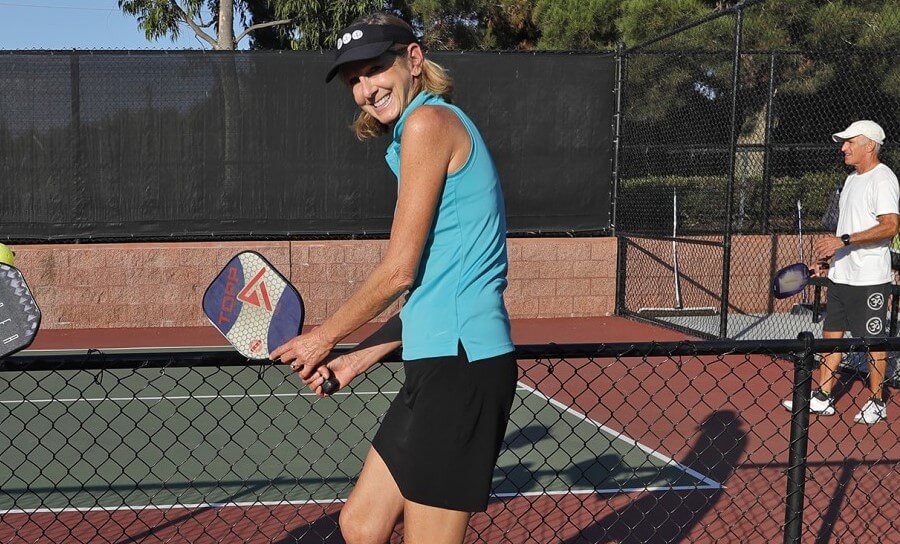by Jenny Foster
Pickleball players normally have a preference on whether to use the forehand or backhand in their shots. For those who tend to use their backhand or just want to improve their backhand skills, there are several strategies that can be applied to strengthen their backhand shots when on the defense in pickleball.
Some may not see the need for learning these new techniques. However, expanding one’s shots in pickleball is part of improvement. It also gives pickleball players the advantage of surprising their opponents with novel techniques during pickleball matches.
One of these backhand strategies is the two-handed backhand block, which can be used when on the defense in the transition zone. In certain cases, pickleball players find it hard to block a ball with just one hand when in the transition zone, especially when their wrist lacks strength when compared with that of the opponent’s.
Thus, to add stability to the backhand shot while in defense, gripping the paddle with both hands should be an effective solution. In relation to this, the paddle must be placed low in front of the paddle and set at the correct angle. Pickleball players should also apply the right amount of pressure to ensure that the paddle will be stable enough as it blocks the pickleball.
In some cases, experienced players just let their paddle down, pointing toward the ground, and allow it to absorb all the force coming from the ball as they are blocking it while gripping the paddle with both hands.
For left- and right-handed players, the position of their hands differ when using the two-handed backhand shot to block the pickleball.

In the case of right-handed players, the left hand should be on top of the other hand, at the closest position to the paddle face, that is, a combination of the left-handed eastern forehand grip and continental grip.
For right-handed players, the two-handed backhand block can be a half-volley or full-volley block. Both blocks involve bending of the knees with the paddle head dropped down. Then, the ball should be hit with an extremely compact backswing. With the player still on bent-knee position, the front of the paddle should make contact with the pickleball. The paddle face angle should be slightly open and stable (through the two-handed grip) as the block is being completed.
While performing the two-handed backhand block, pickleball players should remain in equilibrium and quickly return to their position after finishing the shot.
Although the two-handed backhand block can be used to block a returning ball from the opponent effectively, it limits the reach of a pickleball player. There’s also a certain restriction when switching from backhand to forehand.
Still, despite the advantages, the two-handed backhand block works great against hard volleys. Every pickleball player, regardless of their level, will find this shot useful in their pickleball matches. Notably, mastering this shot is not enough. Pickleball players should also realize when it will benefit them the most.
